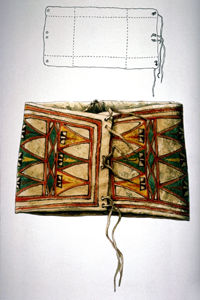Article
Ornamentals
Ornamentals, in horticulture, include both woody and herbaceous plants used primarily as amenities.

Enter your search term
Signing up enhances your TCE experience with the ability to save items to your personal reading list, and access the interactive map.
Create AccountArticle
Ornamentals, in horticulture, include both woody and herbaceous plants used primarily as amenities.
"https://d3d0lqu00lnqvz.cloudfront.net/media/media/efd43801-3741-4547-a9e5-cdc7c21d6b0a.jpg" // resources/views/front/categories/view.blade.phphttps://d3d0lqu00lnqvz.cloudfront.net/media/media/efd43801-3741-4547-a9e5-cdc7c21d6b0a.jpg

Macleans
In the spring of 1997, William Boyle, a microbiologist at Amgen Inc., a drug company based near Los Angeles, placed a telephone call to Dr. Josef Penninger, an immunologist at the firm's Toronto offshoot, the Amgen Research Institute.This article was originally published in Maclean's Magazine on February 8, 1999
"https://www.thecanadianencyclopedia.ca/images/tce_placeholder.jpg?v=e9dca980c9bdb3aa11e832e7ea94f5d9" // resources/views/front/categories/view.blade.phphttps://www.thecanadianencyclopedia.ca/images/tce_placeholder.jpg?v=e9dca980c9bdb3aa11e832e7ea94f5d9

Macleans
The new federal law on reproductive technology tabled last week was a long time coming. A royal commission studied the subject exhaustively from 1989 to 1993.This article was originally published in Maclean's Magazine on May 20, 2002
"https://www.thecanadianencyclopedia.ca/images/tce_placeholder.jpg?v=e9dca980c9bdb3aa11e832e7ea94f5d9" // resources/views/front/categories/view.blade.phphttps://www.thecanadianencyclopedia.ca/images/tce_placeholder.jpg?v=e9dca980c9bdb3aa11e832e7ea94f5d9

Macleans
This article was originally published in Maclean’s magazine on October 5, 1998. Partner content is not updated.
"https://www.thecanadianencyclopedia.ca/images/tce_placeholder.jpg?v=e9dca980c9bdb3aa11e832e7ea94f5d9" // resources/views/front/categories/view.blade.phphttps://www.thecanadianencyclopedia.ca/images/tce_placeholder.jpg?v=e9dca980c9bdb3aa11e832e7ea94f5d9

Article
Ozone depletion is a chemical thinning of the OZONE LAYER in the stratosphere or upper atmosphere. Scientists determined in the 1970s that it is caused by ozone depleting substances (ODSs), particularly by the use of chlorofluorocarbons (CFCs).
"https://www.thecanadianencyclopedia.ca/images/tce_placeholder.jpg?v=e9dca980c9bdb3aa11e832e7ea94f5d9" // resources/views/front/categories/view.blade.phphttps://www.thecanadianencyclopedia.ca/images/tce_placeholder.jpg?v=e9dca980c9bdb3aa11e832e7ea94f5d9

Article
Pablum is a multi-grain processed cereal developed as a nutritious, precooked digestible food for infants. The cereal was first developed at the Hospital for Sick Children in Toronto in 1930 by pediatric doctors Theodore Drake and Frederick Tisdall under the supervision of physician-in-chief Alan Brown. Pablum became commercially available in 1934 through an agreement with the Mead Johnson & Company and was used as a brand name through the early 21st century.
"https://d3d0lqu00lnqvz.cloudfront.net/pablum/pablumcontainer.jpg" // resources/views/front/categories/view.blade.phphttps://d3d0lqu00lnqvz.cloudfront.net/pablum/pablumcontainer.jpg

Article
Palaeontology is the study of fossils, gives us knowledge of past life, helps us understand the nature of ancient organisms and provides information about the composition of the biomass of past times.
"https://www.thecanadianencyclopedia.ca/images/tce_placeholder.jpg?v=e9dca980c9bdb3aa11e832e7ea94f5d9" // resources/views/front/categories/view.blade.phphttps://www.thecanadianencyclopedia.ca/images/tce_placeholder.jpg?v=e9dca980c9bdb3aa11e832e7ea94f5d9

Article
The explorers amassed astronomical, meteorological, geological and magnetic data, and described the country, its fauna and flora, its inhabitants and its "capabilities" for settlement and transportation.
"https://d3d0lqu00lnqvz.cloudfront.net/media/media/9b00c791-d42d-4521-8c31-d13761c076cf.jpg" // resources/views/front/categories/view.blade.phphttps://d3d0lqu00lnqvz.cloudfront.net/media/media/9b00c791-d42d-4521-8c31-d13761c076cf.jpg

Article
Palynology is the study of spores and pollen, has many applications in botany, geology and medicine.
"https://www.thecanadianencyclopedia.ca/images/tce_placeholder.jpg?v=e9dca980c9bdb3aa11e832e7ea94f5d9" // resources/views/front/categories/view.blade.phphttps://www.thecanadianencyclopedia.ca/images/tce_placeholder.jpg?v=e9dca980c9bdb3aa11e832e7ea94f5d9

Article
A pandemic is an outbreak of an infectious disease that affects a large proportion of the population in multiple countries or worldwide. Human populations have been affected by pandemics since ancient times. These include widespread outbreaks of plague, cholera, influenza and, more recently, HIV/AIDS and COVID-19. In order to slow or stop the spread of disease, governments implement public health measures that include testing, isolation and quarantine. In Canada, public health agencies at the federal, provincial and municipal levels play an important role in monitoring disease, advising governments and communicating to the public. Click here for definitions of key terms used in this article.
"https://d3d0lqu00lnqvz.cloudfront.net/media/media/933d22b6-a1f6-4f72-9aa4-78cfb4b1a2c8.jpg" // resources/views/front/categories/view.blade.phphttps://d3d0lqu00lnqvz.cloudfront.net/media/media/933d22b6-a1f6-4f72-9aa4-78cfb4b1a2c8.jpg

"https://www.thecanadianencyclopedia.ca/images/tce_placeholder.jpg?v=e9dca980c9bdb3aa11e832e7ea94f5d9" // resources/views/front/categories/view.blade.phphttps://www.thecanadianencyclopedia.ca/images/tce_placeholder.jpg?v=e9dca980c9bdb3aa11e832e7ea94f5d9

Article
Parasitology is a branch of biology dealing with organisms (animals or, rarely, plants) which live in or on other species (hosts) from which they derive nourishment.
"https://d3d0lqu00lnqvz.cloudfront.net/media/media/362a0d73-4fe0-4fd0-bee5-503c9ba9b84b.jpg" // resources/views/front/categories/view.blade.phphttps://d3d0lqu00lnqvz.cloudfront.net/media/media/362a0d73-4fe0-4fd0-bee5-503c9ba9b84b.jpg

Article
Parfleche (also parflêche) are containers made of rawhide that were used by a variety of Plains Indigenous peoples to carry their personal belongings during hunting trips or while migrating from one location to another. Rawhide was also used to create drumheads, tipi covers, robes, the soles of moccasins and other belongings. Colourful and beautifully decorated, parfleche is considered as much a piece of art as it was a practical tool.
"https://d3d0lqu00lnqvz.cloudfront.net/media/media/7f9f1d10-b91c-42f2-be30-0d650076b5cf.jpg" // resources/views/front/categories/view.blade.phphttps://d3d0lqu00lnqvz.cloudfront.net/media/media/7f9f1d10-b91c-42f2-be30-0d650076b5cf.jpg

Macleans
A doctor's diagnosis can land like a punch in the solar plexus: you have Parkinson's disease. Chronic, progressive and incurable. In the life-altering reverberations that follow come the questions.This article was originally published in Maclean's Magazine on April 29, 2002
"https://www.thecanadianencyclopedia.ca/images/tce_placeholder.jpg?v=e9dca980c9bdb3aa11e832e7ea94f5d9" // resources/views/front/categories/view.blade.phphttps://www.thecanadianencyclopedia.ca/images/tce_placeholder.jpg?v=e9dca980c9bdb3aa11e832e7ea94f5d9

Article
A patent applies to an invention that is determined to be new, useful and inventive. A patent provides an inventor with the exclusive right to make, use or sell their invention for a certain number of years. When a patent expires, the invention becomes public property. (See also Intellectual Property; Inventors and Innovations.)
"https://www.thecanadianencyclopedia.ca/images/tce_placeholder.jpg?v=e9dca980c9bdb3aa11e832e7ea94f5d9" // resources/views/front/categories/view.blade.phphttps://www.thecanadianencyclopedia.ca/images/tce_placeholder.jpg?v=e9dca980c9bdb3aa11e832e7ea94f5d9
